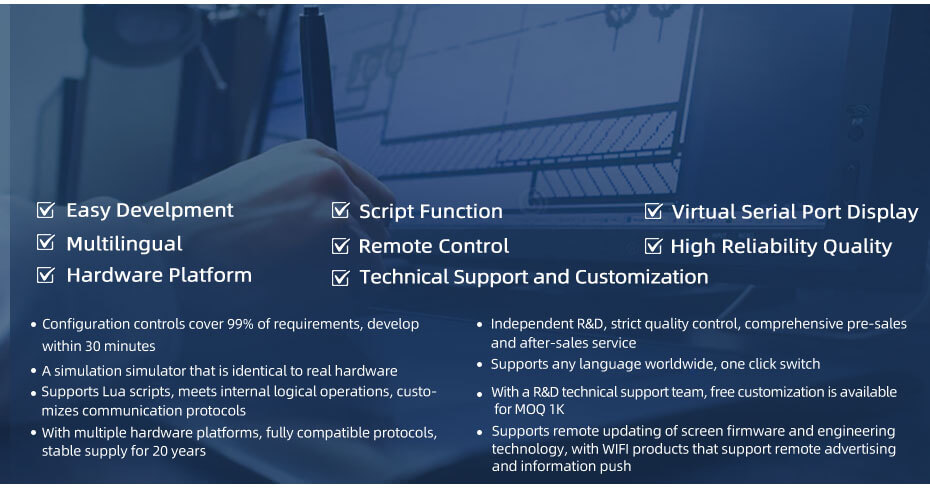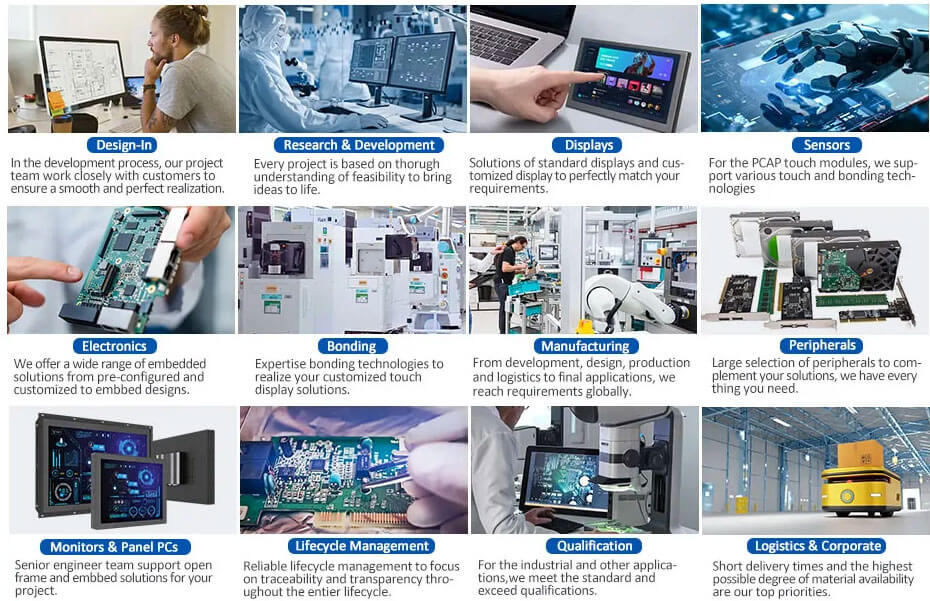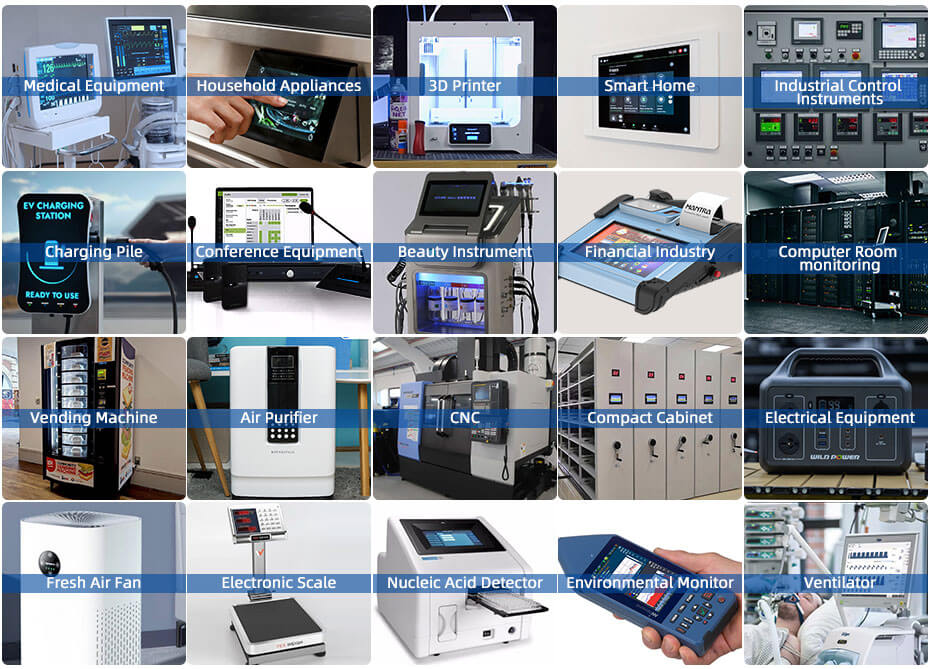Writer: adminRelease Time: 2025-10-31 09:43Browse: 189

An HMI display (Human-Machine Interface display) is a specialized screen that allows humans to interact with machines, systems, or processes in an intuitive visual way. It acts as the communication bridge between an operator and the machinery or equipment being controlled. HMI displays are commonly used in industrial automation, manufacturing plants, smart buildings, vehicles, and various embedded systems.
Visualization of Data:
HMI displays present real-time information such as temperatures, pressures, speeds, or production counts in graphical form using charts, meters, and status indicators. This makes it easier for operators to monitor complex processes.
Control Interface:
Users can send commands through touch, buttons, or rotary knobs to start or stop machines, adjust settings, or change system parameters. Advanced HMI systems support multitouch gestures similar to smartphones.
Alerts and Notifications:
They display alarms, error messages, or system faults so operators can respond quickly to issues, improving safety and reducing downtime.
Data Logging and Analysis:
Many HMIs record operation history, trends, and performance data, which can be analyzed later for maintenance planning and optimization.
Display Panel: Usually LCD, TFT, or OLED, providing clear visuals even in harsh industrial environments.
Processor and Memory: Handle graphical rendering, logic control, and communication with the machine’s PLC (Programmable Logic Controller).
Touch Interface: Either resistive (pressure-based) or capacitive (finger-based) depending on the application environment.
Communication Ports: Such as Ethernet, RS232/485, CAN, or Modbus for connecting to industrial control systems.
Basic Text Displays: Simple, low-cost interfaces showing limited data or status messages.
Graphical HMIs: Offer rich color screens, charts, and touchscreen interaction.
Advanced or Smart HMIs: Integrate with IoT and SCADA systems, supporting remote monitoring, cloud data, and advanced analytics.
Industrial Automation: For controlling assembly lines, robotic systems, and production machinery.
Smart Buildings: Managing HVAC, lighting, and energy systems.
Automotive Systems: Dashboards and infotainment displays.
Medical Equipment: Touchscreen control panels for diagnostic and treatment devices.
Simplifies complex operations through graphical visualization.
Increases efficiency by centralizing control and monitoring.
Reduces operator training time.
Enhances safety with real-time alerts and intuitive design.
In short, an HMI display is the operator’s “window” into a machine — enabling control, monitoring, and optimization of automated systems through an easy-to-use visual interface.
Customized services
Customization Fees: For orders of 1,000 units, some customization fees may be waived.
Hardware Circuits: Customizable PCB size, circuit thickness, custom circuitry, military-grade temperature display, and more.
Software Customization: Customizable instructions or controls based on user needs, reducing development effort.
Design Services: Graphic design and product structure design services available.
Other: Customizable on demand to meet all user needs.
PRODUCTION AND MANUFACTURING

Application Areas
Smart HMI Displays product links for reference:
https://www.youritech.com/products/smart-hmi-displays/
Shenzhen Youritech Technology Co.,Ltd. focuses on the research and development ,design ,customization and production of LCD,OLED,touch screen and other products.
website:https:www.youritech.com
Contact information:[email protected]